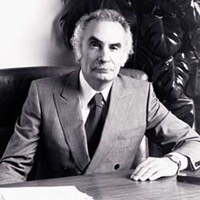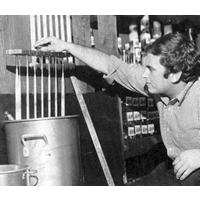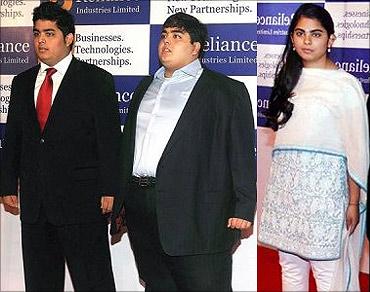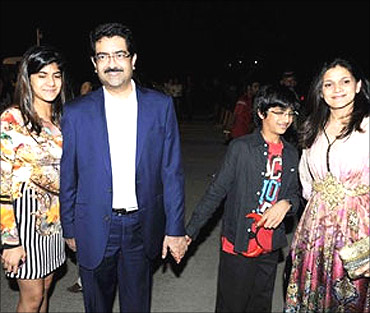Nothing can stop the man with the right mental attitude from achieving his goal; nothing on earth can help the man with the wrong mental attitude.
Thursday, 29 September 2011
10 World Famous Companies that Started in Garages.
10 Famous Garage Startups
#1 Amazon
Jeff Bezos founded Amazon.com in 1994 as an online bookstore. At the time, it was completely run out of his garage in Bellevue, Washington.He sold his first book in July 1995 and issued his IPO two years later in 1997.
Today it’s the world’s largest online retailer.
Address: 10704 NE 28th, Bellevue, Washington
#2 Apple
In 1976, Steve Jobs and Steve Wozniak, ages 21 and 26 respectively, started Apple Computers by selling 50 units of Wozniak’s Apple I Computer at $500 apiece to a local retailer. Jobs took the purchase order to a parts distributor and ordered the parts. “The Steves” and their small team hand-built 50 computers in 30 days from a garage in Cupertino, CA.Today, Apple is the most valuable technology company in the world.
Address: 2066 Crist Dr, Los Altos, California
#3 Disney
About 45 minutes down the road from Disneyland Park in Anaheim, CA, there’s a house in Los Angeles where The Walt Disney Company got its start.In 1923, the house belonged to Walt Disney’s uncle, Robert Disney. Walt and his brother Roy moved in with their uncle and set up “The First Disney Studio” in the one-car garage out back. There they started filming the Alice Comedies which was part of the original Alice’s Wonderland.
Today, Disney is the highest-grossing media conglomerate in the world.
Address: 4651 Kingswell Ave, Los Angeles, California
#4 Google
As Stanford Graduate students, Larry Page and Sergey Brin started what’s now known as Google from Susan Wojcicki’s garage in September 1998.Soon the project was interfering with their schoolwork, so they tried to sell it to Excite for $1 million. Excite rejected the offer and now Google is the most trafficked site in the world.
Address: 232 Santa Margarita Ave, Menlo Park, California
#5 Harley Davidson
In 1901, 21-year-old William S. Harley drew up plans to create a small engine to power a bicycle.Over the next two years, Harley and his childhood friend, Arthur Davidson, built their motor-bicycle out of their friend’s 10 by 15-foot wooden shed in Milwaukee, Wisconsin. It was the equivalent of a garage because they didn’t have cars.
They officially founded Harley-Davidson in 1903 and today it’s the most well-known motorcycle brand in the world.
Address: Somewhere in northern Milwaukee, Wisconsin
#6 Hewlett-Packard
In 1939, Bill Hewlett and Dave Packard founded HP in Packard’s garage with an initial investment of $538.Their first product was an audio oscillator and one of their first customers was Walt Disney, who purchased eight oscillators to develop the sound system for the movie Fantasia.
The HP Garage in Palo Alto is known as the birthplace of Silicon Valley and HP is now one of the largest companies in the world.
Address: 367 Addison Ave, Palo Alto, California
#7 Lotus Cars
In 1948, at the age of 20, Anthony Colin Bruce Chapman started Lotus Cars by building the first Lotus racing car in stables behind The Railway Hotel in Hornsey, North London. Chapman used a 1930s Austin Seven and a power drill to build the Lotus Mark I.Today Lotus Cars is one of the premier racing car manufacturers in the world.
Address: 472 Hornsey Rd, London N19 4EF, United Kingdom
#8 Maglite
In 1950, Tony Maglica moved from his war-torn home of Croatia back to America. Knowing very little English, he settled in Los Angeles and took jobs wherever he could find them.In 1955, after saving $125, Tony put a down-payment on his first lathe. Then he started working out of a Los Angeles area garage to manufacture precision parts. He incorporated Mag Instrument in 1974 and released their first flashlight in 1979.
Today, Maglite is the standard issue flashlight for all police officers in the US.
Address: Somewhere in Los Angeles, California
#9 Mattel
Harold “Matt” Matson and Elliot Handler founded Mattel out of a garage in Southern California as picture frame company in 1945. To get the most out of their materials, they started using picture frame scrapes to create dollhouses.Soon their dollhouses were selling better than their picture frames so they turned their emphasis to toys.
Today Mattel, Inc. is the highest-grossing toy company in the world.
Address: Somewhere in Southern California
#10 Yankee Candle Company
In 1969, at 16 years old, Michael Kittredge made his scented candle in his garage out of melted crayons as a gift for his mother. The neighbors took notice and expressed interest in buying Kittredge’s candles, so he started mass-producing them.Four years later, Kittredge outgrew the garage so he moved the Yankee Candle Company to an old mill in Holyoke, Massachusetts.
Today it’s the largest manufacturer of scented candles in the US.
Address: Somewhere in South Hadley, Massachusetts.
What’s the Point?
Everything starts as nothing.It’s easy to look at the world’s largest companies and think, “I could never start something like that.” And you’d be right. Most of these companies took decades to get where they are today.
They didn’t start by trying to create Amazon, Apple, and Google. They started by creating an online bookstore, a computer, and a search algorithm.
Whether it’s a garage, a basement, or a dorm room, every business has humble beginnings. It’s not about where you start. It’s where you end up.
Sunday, 25 September 2011
Friday, 23 September 2011
8 Limiting patterns of Thinking
It can be extremely difficult to focus on the good when, seemingly, bad things are happening in your life. However you can train your mind to focus on the good things in your life rather than dwelling on the bad. No it’s not one of those positive thinking articles. This is about changing the way you think, changing your thinking pattern. Do you use any of these thinking patterns in your day to day life? 8 limiting patterns of thinking
- ‘Life is shit’ Thinking pattern –Everything in life is bad, everybody is not to be trusted and nothing good will ever happen to them e.g. “I won’t get that job, the interviewer didn’t like me, I didn’t particularly like them anyway.”
- ‘Unsubstantiated conclusive’ Thinking pattern– You tend to make a lot of conclusions without any evidence to back up your conclusions. This can be a really destructive pattern as it can limit you in seeing reality for what it is e.g. “He walks a bit funny, he must be gay.” (I actually heard someone saying this about a colleague last week).
- ‘Never to me’ Thinking pattern – This is when you think nothing good will ever happen to you. This can be a deep seated way of thinking and it is a deep down inability to believe you are worthy of anything good happening to you e.g. “I’ll never have money, I’ve never had it before so I’ll never have it in the future, might as well carry on with this shitty job, at least it pays the mortgage.”
- ‘The negative psychic’ Thinking pattern – Presuming you know what people are thinking about you and it’s all bad. e.g. “She thinks I’m an idiot, I’ll try to avoid talking to her.”
- ‘Should, would, could’ Thinking pattern – This type of person knows what they have to do to change their life, they are capable and they know it and they would do it if only……… e.g. “I know I could go to university and I would, but I’m just to busy with other things right now, I’ll apply next year.”
- ‘Emotion based’ Thinking pattern – Your emotions control what you are thinking and therefore your vision of what reality is e.g. “I feel incapable of doing that so I must be incapable”.
- ‘It’s all my fault’ Thinking pattern – You see yourself as being the cause of everything bad that has happened e.g. “It’s my fault he left me for another woman.” You’ll notice this type of person does not take responsibility for the good things that happen.
- ‘They’re all wrong’ Thinking pattern – You see everyone as incapable of doing anything right and your way is the best way to do it e.g. “He can’t do it right, I’ll stay late tonight and fix it when he’s gone.”
How to change the destructive thinking patterns
The first stage of changing is to recognise the problem – You will find a lot of people in life who just don’t think there is a problem so there is no need to change. If this is you then do nothing. If you want to change you must think there is a need and you will start to recognise what things need to change and it usually starts with your perception of life. Everybody’s perception of life is different, therefore everyone’s reality is different. I don’t live in the same world as you and you don’t live in the same world as me. That might sound a strange concept to some people, but think about it for a few minutes, it could change the way you see the world.
The second stage is to be aware of when you are using the destructive thinking patterns – We can employ different thinking patterns depending on what we are doing in life. For example you could use a positive thinking pattern at work as you are very confident in your ability and yet use a destructive one when it comes to looking for love. Recognising when you use destructive thinking patterns can help you to change that pattern. Now that you have recognised when you use the destructive thinking patterns it is now time to change it.
The third stage is to replace the bad with the good – This is something that you don’t do immediately. You don’t say to yourself ‘I’ll never be able to do that”, which is you old thinking pattern, to “Oh yes I can”. That won’t work. You have to let the old pattern die slowly whilst slowly introducing your new improved thinking pattern. Here an example:
You are out in a club and you want to talk to someone you are attracted to. Your thoughts are “ She’ll never talk to me, she’s gorgeous.” You will immediately recognise this pattern of thinking and tell yourself something good about yourself e.g. “I’m good at _______(FILL IN THE BLANK), it can be anything. This will not immediately help your situation but it will slowly begin to change your old destructive thinking pattern with a new one.
This stage takes place over time and is not done immediately. The best time to change a destructive thinking pattern is to let it run it’s course and slowly replace it with a thinking pattern that is better for you. people want a microwave life, stick it in the micro and it’s ready in 3 minutes, your life is not like that and you cannot change in 1 day, unless something drastic happens.
This stage takes place over time and is not done immediately. The best time to change a destructive thinking pattern is to let it run it’s course and slowly replace it with a thinking pattern that is better for you. people want a microwave life, stick it in the micro and it’s ready in 3 minutes, your life is not like that and you cannot change in 1 day, unless something drastic happens.
You can work on more than 1 destructive thinking pattern at a time.
To recap
To change your thinking pattern you have to
Recognise
Be aware
Slowly change and introduce a new thinking pattern
Keep working on all your destructive thinking patterns
Be aware
Slowly change and introduce a new thinking pattern
Keep working on all your destructive thinking patterns
Change your life with your new way of thinking
Recognising and changing your way of thinking can be a long process depending on what patterns of thinking you employ and how badly you want to change. People can change, do change and change for the rest of their lives, I know I have, so don’t be thinking you’ll never be able to change, you can and you will if you really want to.
After a few months you will see a huge difference in your life and you will want to use your new way of thinking to good effect. You will start to notice new types of people enter into your life who can help you reach the goals you have in life and in turn you will help them reach their goals, don’t worry about how just now.
Take time to think about your goals and take the time often to do this. I take time every day to think about where I want to be in life and slowly but surely it happens. Personally I find it better in the morning to really think about my goals and then again at night just before I am falling asleep. It works for me but you will have to experiment a little to find your way of thinking about your goals.
The seven deadly sins.......
- Lust – to have an intense desire or need: “ anyone who looks at a woman lustfully has already committed adultery with her in his heart”
- Gluttony – excess in eating and drinking: “for drunkards and gluttons become poor, and drowsiness clothes them in rags”
- Greed - excessive or reprehensible acquisitiveness: “Having lost all sensitivity, they have given themselves over to sensuality so as to indulge in every kind of impurity, with a continual lust for more”
- Laziness – disinclined to activity or exertion: not energetic or vigorous: “The way of the sluggard is blocked with thorns, but the path of the upright is a highway”
- Wrath – strong vengeful anger or indignation: “A gentle answer turns away wrath, but a harsh word stirs up anger”
- Envy – painful or resentful awareness of an advantage enjoyed by another joined with a desire to possess the same advantage: “Therefore, rid yourselves of all malice and all deceit, hypocrisy, envy, and slander of every kind. Like newborn babies, crave pure spiritual milk, so that by it you may grow up in your salvation”
- Pride - quality or state of being proud – inordinate self esteem: “Pride goes before destruction, a haughty spirit before a fall”
Wednesday, 21 September 2011
Brainpower Tone Tools
25 Walkways into Brainpower Tone Tools

1 – Pass Talking Stick at meetings to get positive ideas for new ventures. Replace fears, fueled by dangerous cortisol, with profitable adventures fueled by serotonin. Run highly interactive meetings to show confidence in others. Brainstorm innovative components so that all speak and feel heard. Avoid defaulting back to ruts – by shifting up meeting facilitators. Then offer positive feedback on their facilitation strengths.
2 – Join social media networks to discover new trends for workplace rejuvenation. Help your team to avoid relying on their basal ganglia’s natural ruts for careless tone. Foster online results that engage serotonin, the miracle drug for workplace success.
3 – Ask advice from novices at times, for mind-bending revelations opened by questions to people who differ. Growth comes to any organization where youthful interests lead novel ventures in shared directions at work.
4 – Risk to win cutting edge advances, and the dopamine your brain requires to risk well, tends to follow. Take failures in stride and reward excellence each time it surfaces, to keep risks alive and winning.
5 – Become the manager you’d like others to see in you. People will then copycat the best because brains come equipped with mirror neurons – an inner mechanism to mimic actions of people around you. Each time you act like a genius, your brain – and others - build new neuron pathways for similar actions.
6 – Engage right and left brain to solve problems and motivate whole brain solutions by including those who differ or disagree. Multiple intelligence tools can be gauged and engaged through Mita growth survey.
7 – Discuss problems with solutions more in mind to engage curiosity for rejuvenated practices that replace broken systems. Act opposite even one habit that holds back innovation, and new solutions stand a chance. Reflect together first, then apply change suggestions that move yourself and others into a better place.
8. Listen with your brain to discover what promotes or reduces listening at work. Listen for positive tone that helps people segue into doable solutions from different angles to resolve stubborn problems.
9 – Focus on one growth area and move past former distractions, because the brain comes equipped with a neural bottleneck that thwarts multi-tasking according to research.
10 –Seek feedback and recognize the universal problem behind sinking morale and plummeting productivity? 75% of employees claim to be disengaged work. Poor tone destroys capabilities. Seek long range benefits by jumpstarting peace plans, where opposing views are welcomed, rather than settle for one side. Then track and share peaceful resolutions achieved.
11 – Reward novelty by introducing and modeling one change weekly at work. Novelty ratchets up the collective IQ of any group and moves groups beyond gridlock or mere compromise.
12 – Capitalize on gender and race differences by seeking benefits from male and female brains and by using unique insights from both. Lead in ways that fuse racial differences into mutual dividends, and support minorities as facilitators.
13 – Chill with ethical people to show value-based-brainpower that sustains growth for all. Not only does the moral brain shape culture – but workplace ethics also shape brains. Contribute to an valued climate by supporting others’ talent beyond personal plans for financial rewards without ethical results.
14 – Hire older workers and expect agility because we now know how plasticity helps seniors to grow new brainpower daily – rather than waste wisdom by settling for old-age-bagel-gumming.
15- Facilitate winning solutions for people who differ and discourage bullying. Increase peaceful solutions to see violence and conflict fade in favor of inclusion. Change up one routine to create space for inspiration and growth. Improve your brain’s executive skills by leading one shared solution weekly in order to prompt curiosity that sustains growth and squashes stagnation.
16 – Tame the amygdala for tone’s sake. Act calmly under pressure and your brain stores that reaction for the next flare-up, allowing you to come up with innovative alternatives in pressured settings. Research shows that the brain comes equipped with chemicals to tame the amygdala, and it starts with snipping that urge for kneejerk reactions.
17 – Laugh at little things. Gain brain benefits from enzymes emitted with humor that respects all, laughs at self and diminishes none.
18- Use people’s names as you communicate. Add value and release chemicals for well being through using people’s names. Speak people’s names in their presence, and research confirms you also spark their brain’s sense of worth. Sound like a tone tactic to add value today?
19 – Remember more by outsourcing facts through creating lists, and using other memory devices such as sketching new ideas as you hear them. Or apply new facts to what you already do, and welcome novelty that research now teaches will literally stretch your working memory.
20 – Discourage cynical encounters. Model tone tools to open opportunities not available to critics who counter creativity with cynicism. Expect to find one growth possibility in unexpected setbacks. Engage cynics in the kind of solutions that lands your ventures like gifted pilots land jets on emergency runways.
21 – Make mistakes into stepping stones to success. Move past regrets that shut down brainpower – by doing guilt’s opposite. How so? Step past prior mistakes and build forward on lessons learned from the past. Glance into rearview windows, but gaze into windshields.
22 – Stretch working memory – Design with specialists to move past technical glitches into innovative results. Learn a technology communication to engage the brain’s innate ability to use new mechanical tools. Engage smart skills that combine hard and soft traditional aptitudes to form brainpowered leadership tools for whole brain ventures. For instance, integrate what’s traditionally separated (such as different departments) by proposing innovative initiatives that originate from increased brainpower across multiple skills.
23 – Reconfigure people as capital for higher ROI. Position people as capital at the center, and expect increased innovation ROI at the edges. Replace one limiting myth (such as more myth that more money makes for finer performance) with a new reality (such as improved talents will add more profits for all). Refuse to settle for living traditional myths that limit innovative progress.
24 – Cross pollinate brainpower between novices and experts to boost creativity in both. Move younger people into experienced pathways for growth, encouraging them to teach as they learn from experts. Integrate people, departments, career field, and developmental levels. Collaborate to fix broken systems by offering your talents boldly. Support diverse brains from many backgrounds to replace broken systems with high-performing tools.
25 – Increase leadership IQ by doing one alternative act daily. Move leadership brainpower up a notch since we now know that IQ is not fixed. It’s fluid and grows daily for those who act in the opposite direction of broken practices, rigid routines and ruts.
Make one significant change weekly from these brainpowered tools, and watch one workplace problem at a time slip away – while you tapping into mind-bending resources rather than mere methodological reasoning. Then hear and value success stories shared, to keep growth alive.

1 – Pass Talking Stick at meetings to get positive ideas for new ventures. Replace fears, fueled by dangerous cortisol, with profitable adventures fueled by serotonin. Run highly interactive meetings to show confidence in others. Brainstorm innovative components so that all speak and feel heard. Avoid defaulting back to ruts – by shifting up meeting facilitators. Then offer positive feedback on their facilitation strengths.
2 – Join social media networks to discover new trends for workplace rejuvenation. Help your team to avoid relying on their basal ganglia’s natural ruts for careless tone. Foster online results that engage serotonin, the miracle drug for workplace success.
3 – Ask advice from novices at times, for mind-bending revelations opened by questions to people who differ. Growth comes to any organization where youthful interests lead novel ventures in shared directions at work.
4 – Risk to win cutting edge advances, and the dopamine your brain requires to risk well, tends to follow. Take failures in stride and reward excellence each time it surfaces, to keep risks alive and winning.
5 – Become the manager you’d like others to see in you. People will then copycat the best because brains come equipped with mirror neurons – an inner mechanism to mimic actions of people around you. Each time you act like a genius, your brain – and others - build new neuron pathways for similar actions.
6 – Engage right and left brain to solve problems and motivate whole brain solutions by including those who differ or disagree. Multiple intelligence tools can be gauged and engaged through Mita growth survey.
7 – Discuss problems with solutions more in mind to engage curiosity for rejuvenated practices that replace broken systems. Act opposite even one habit that holds back innovation, and new solutions stand a chance. Reflect together first, then apply change suggestions that move yourself and others into a better place.
8. Listen with your brain to discover what promotes or reduces listening at work. Listen for positive tone that helps people segue into doable solutions from different angles to resolve stubborn problems.
9 – Focus on one growth area and move past former distractions, because the brain comes equipped with a neural bottleneck that thwarts multi-tasking according to research.
10 –Seek feedback and recognize the universal problem behind sinking morale and plummeting productivity? 75% of employees claim to be disengaged work. Poor tone destroys capabilities. Seek long range benefits by jumpstarting peace plans, where opposing views are welcomed, rather than settle for one side. Then track and share peaceful resolutions achieved.
11 – Reward novelty by introducing and modeling one change weekly at work. Novelty ratchets up the collective IQ of any group and moves groups beyond gridlock or mere compromise.
12 – Capitalize on gender and race differences by seeking benefits from male and female brains and by using unique insights from both. Lead in ways that fuse racial differences into mutual dividends, and support minorities as facilitators.
13 – Chill with ethical people to show value-based-brainpower that sustains growth for all. Not only does the moral brain shape culture – but workplace ethics also shape brains. Contribute to an valued climate by supporting others’ talent beyond personal plans for financial rewards without ethical results.
14 – Hire older workers and expect agility because we now know how plasticity helps seniors to grow new brainpower daily – rather than waste wisdom by settling for old-age-bagel-gumming.
15- Facilitate winning solutions for people who differ and discourage bullying. Increase peaceful solutions to see violence and conflict fade in favor of inclusion. Change up one routine to create space for inspiration and growth. Improve your brain’s executive skills by leading one shared solution weekly in order to prompt curiosity that sustains growth and squashes stagnation.
16 – Tame the amygdala for tone’s sake. Act calmly under pressure and your brain stores that reaction for the next flare-up, allowing you to come up with innovative alternatives in pressured settings. Research shows that the brain comes equipped with chemicals to tame the amygdala, and it starts with snipping that urge for kneejerk reactions.
17 – Laugh at little things. Gain brain benefits from enzymes emitted with humor that respects all, laughs at self and diminishes none.
18- Use people’s names as you communicate. Add value and release chemicals for well being through using people’s names. Speak people’s names in their presence, and research confirms you also spark their brain’s sense of worth. Sound like a tone tactic to add value today?
19 – Remember more by outsourcing facts through creating lists, and using other memory devices such as sketching new ideas as you hear them. Or apply new facts to what you already do, and welcome novelty that research now teaches will literally stretch your working memory.
20 – Discourage cynical encounters. Model tone tools to open opportunities not available to critics who counter creativity with cynicism. Expect to find one growth possibility in unexpected setbacks. Engage cynics in the kind of solutions that lands your ventures like gifted pilots land jets on emergency runways.
21 – Make mistakes into stepping stones to success. Move past regrets that shut down brainpower – by doing guilt’s opposite. How so? Step past prior mistakes and build forward on lessons learned from the past. Glance into rearview windows, but gaze into windshields.
22 – Stretch working memory – Design with specialists to move past technical glitches into innovative results. Learn a technology communication to engage the brain’s innate ability to use new mechanical tools. Engage smart skills that combine hard and soft traditional aptitudes to form brainpowered leadership tools for whole brain ventures. For instance, integrate what’s traditionally separated (such as different departments) by proposing innovative initiatives that originate from increased brainpower across multiple skills.
23 – Reconfigure people as capital for higher ROI. Position people as capital at the center, and expect increased innovation ROI at the edges. Replace one limiting myth (such as more myth that more money makes for finer performance) with a new reality (such as improved talents will add more profits for all). Refuse to settle for living traditional myths that limit innovative progress.
24 – Cross pollinate brainpower between novices and experts to boost creativity in both. Move younger people into experienced pathways for growth, encouraging them to teach as they learn from experts. Integrate people, departments, career field, and developmental levels. Collaborate to fix broken systems by offering your talents boldly. Support diverse brains from many backgrounds to replace broken systems with high-performing tools.
25 – Increase leadership IQ by doing one alternative act daily. Move leadership brainpower up a notch since we now know that IQ is not fixed. It’s fluid and grows daily for those who act in the opposite direction of broken practices, rigid routines and ruts.
Make one significant change weekly from these brainpowered tools, and watch one workplace problem at a time slip away – while you tapping into mind-bending resources rather than mere methodological reasoning. Then hear and value success stories shared, to keep growth alive.
" EMOTIONAL BANK ACCOUNT"
Emotional Bank Account is probably one of the most powerful ideas ever created for the development of interpersonal relationships. If you’ve never heard of this, it basically means that anyone with whom we have a relationship with, whether it be our coworkers, family or friends, we maintain a personal “emotional” bank account with them. This account begins on a neutral balance. And just as with any bank account, we can make deposits and withdrawals. However, instead of dealing with units of monetary value, we deal with emotional units.
The emotional units that Covey speaks of are centered around trust. When we make emotional deposits into someone’s bank account, their fondness, trust, and confidence in us grows. And as a result our relationship develops and grows. If we can keep a positive reserve in our relationships, by making regular deposits, there will be greater tolerance for our mistakes and we’ll enjoy open communication with that person. On the contrary, when we make withdrawals and our balance becomes low or even overdrawn, bitterness, mistrust and discord develops. If we are to salvage the relationship, we must make a conscious effort to make regular deposits.
This post will discuss Covey’s six major ways of making deposits into these Emotional Bank Accounts and how we can avoid making withdrawals.
1. Understanding the Individual
In Covey’s book, seven habits of highly effective people, one of the seven habits is “seek first to understand then to be understood”. Truly understanding what others are feeling is not always that easy. We must remove ourselves from our egocentric viewpoint and put ourselves into the minds and shoes of others. I say minds and shoes because we must try to first understand the thought patterns and second walk in their shoes or empathize with them.
One of my major faults when communicating with others is, while they are talking I tend to think what I am going to say next. Truly understanding someone requires us to wholly and completely concentrate on what the other person is trying to say, not reloading, just waiting to fire off your response
2. Keeping Commitments
Certainly when we break our promises to others, we make major withdrawals from their Emotional Bank Accounts. However, keeping commitments is not just relegated to promises. It also includes things such as arriving to work and appointments on time, fulfilling our duties, and living up to every word that comes out of our mouth.
3. Clarifying Expectations
There is nothing more frustrating in a relationship than not understanding what is expected of you. Although many of us wish we could be, we are not mind readers. And because each of us sees life differently and has different backgrounds and life experiences, expecting someone to just “know” is not only unfair but completely unrealistic. It’s important that the person with whom you are dealing with, knows exactly what is expected of them. Doing this will keep them out of the dark and allow them to relate you confidently, knowing that what they are doing is in line with your expectations.
4. Attending to the Little Things
Little courtesies, kind words and warm smiles are at the heart of the little things that brighten up a relationship. It shows recognition and an awareness of others. It’s interesting, but within our relationships, if you want success, it’s the little things that really become the big things.
5. Showing Personal Integrity
Nothing is probably more damaging to a relationship, then a lack of integrity. Being that the Emotional Bank Account is based upon trust, you could essentially be doing all of the previous things, but without trust, it is to no avail. Integrity means wholeness, completeness, or soundness. In this case soundness of moral character. Integrity is the rock-solid foundation upon which all successful relationships are built.
6. Apologizing Sincerely When We Make a Withdrawal
Granted, we are all mortal. We make mistakes. That’s part of life and learning. Knowing when you are wrong and admitting your mistakes prevents the wounds that you’ve caused in others from festering and allows them to heal. When appropriate, sincere apology will keep your relationships accounts in the positive, allowing you to maintain the balance that has been created in your application of all of the previous steps.
Saturday, 17 September 2011
India's billionaire sons and daughters
They are India's richest children. Heirs to India's most wealthy companies, they are in an enviable position. Some of them have already taken charge of their business empires.
Meet India's billionaire kids...
Akash, Isha and Anant Ambani
Children of Mukesh Ambani, India's richest man, Akash, Isha and Anant Ambani are among the youngest billionaire heirs in India.
Reliance chairman Mukesh Ambani is the second richest Indian.
Mukesh Ambani's net worth in 2011: Rs 1,53,822.45 crore (Rs. 1,538.224 billion)
Image: Akash, Anant, Isha Ambani.
Despite having enormous wealth one of them is most unhealthy.
Ananyashree, Aryaman Vikram and Advaitesha Birla Birla's three children will inherit the entire wealth of the Birla empire.
Kumar Mangalam Birla's net worth in 2011: Rs 53,505.12 crore (Rs. 535.051 billion)
Image: Kumar Mangalam Birla's children.
Nisaba Godrej and Tanya Dubash Adi Godrej's daughters, Nisaba Godrej and Tanya Dubash play a key role in the company.
Nisaba is the president, Human Capital and Innovation for Godrej Industries and associate companies.
Tanya Dubash is on the boards of several Godrej Group companies.
Adi Godrej's net worth in 2011: Rs 16,535.94 crore (Rs 165.359 billion)
Image: Nisaba Godrej (R) and Tanya Dubash (L).
Aditya and Vanisha Mittal Lakshmi Mittal's son Aditya Mittal is the chief financial officer, (CFO) of the world's largest steel firm Arcelor Mittal.
Vanisha Mittal has been a Director at LNM Holdings (the holding company for the Mittal group), Arcelor Mittal, Mittal Steel, Temirtau JSC Since 2004.
Lakhsmi Mittal's net worth: $31.1 billion
Image: Aditya and Vanisha Mittal.
Vanisha mittal's extravaganza wedding is known to all ...
Siddhartha Mallya Heir to the Mallya group of companies, Siddhartha Mallya was educated at Wellington College in the UK and Queen Mary's College in the University of London.
Vijay Mallya's net worth in 2011: Rs 15,075.22 crore (Rs 150.752 billion)
Image: Siddhartha Mallya.
He has an empire to boost, a playboy himself, but not worth it ...
Pia Singh
Kushal Pal Singh's daughter, Pia Singh serves as the managing director of DT Cinemas, and DLF Retail Developers.
She has worked for the risk undertaking department of GE Capital and the investment division of General Electric, US. She serves as whole-time director of DLF Limited. Kushal Pal Singh's net worth in 2011: Rs 35,665.94 crore (Rs. 356.659 billion)
Rishad Premji Rishad Premji, son of Wipro chairman Azim Premji joined his father, in 2007, after working for a while with Bain & Co and General Electric.
Azim Premji's net worth in 2011: Rs 93,148.56 crore (Rs 931.485 billion)
Roshni Nadar Roshni Nadar, Shiv Nadar's daughter is the executive director and the CEO of HCL Corporation. Shiv Nadar's net worth in 2011: Rs 22,244.84 crore (Rs. 222.448 billion)
Jai Anmol and Jai Anshul Ambani Anil Ambani's sons, Anmol and Anshul will take over the ADAG enterprise.
Anil Ambani's net worth in 2011: Rs 61,663.12 crore (Rs 616.631 billion)
Eiesha, Kavin and Shravin Mittal Eiesha, Kavin and Shravin Mittal are heirs of the telecom giant, Bharti Airtel. Sunil Mittal's net worth in 2011: Rs 92,714.49 crore (Rs 927.144 billion)
Shashwat Goenka Shashwat Goenka is the son of Sanjiv Goenka, vice chairman of RPG enterprises.
Sanjiv Goenka's net worth: $1.4 billion
Lakshmi Venu Lakshmi Venu, daughter of TVS Motor's managing director Venu Srinivasan, is the vice president (global business development and strategy) for Sundaram Clayton Ltd, the holding company of TVS Motors.
Lakshmi Venu has married Infosys co-founder and chief mentor N R Narayana Murthy's son, Rohan Murthy.
Image: Lakshmi Venu.
Indian billionaires
Subscribe to:
Comments (Atom)

 Graphic Design
Graphic Design
























